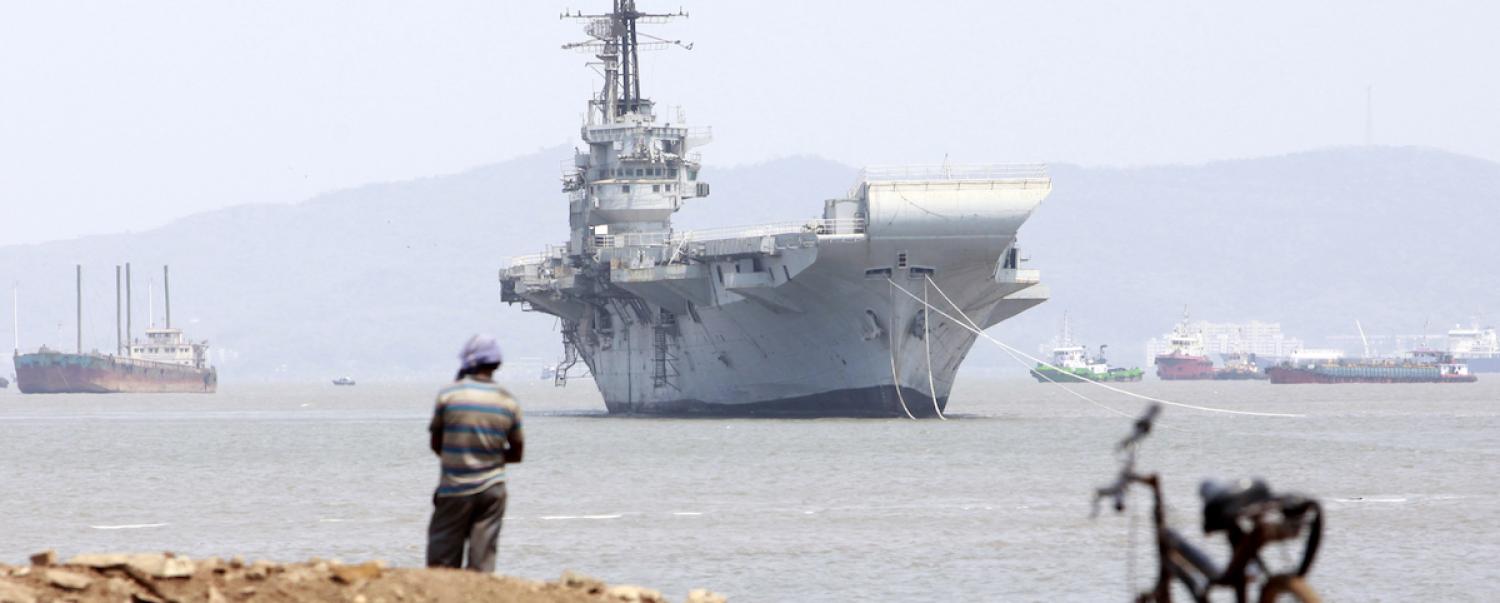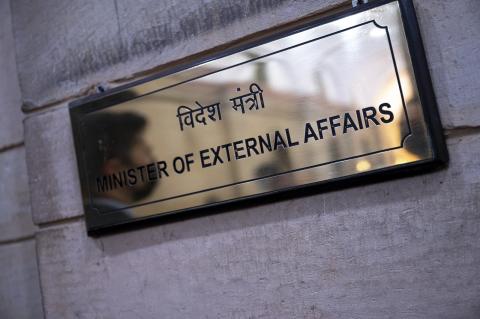Long considered the crowning jewel of the fleet, India has continuously operated an aircraft carrier for well over half-a-century. Since 1961, when its first carrier entered service, India has gone to war with Portugal (1961), China (1962), and Pakistan (1965, 1971, and 1999).
How is it then, that in all that time, an Indian aircraft carrier has never been employed in a high-end warfighting role, against a near peer adversary in a contested environment?
With India acquiring more carriers and adding jewels to the crown, this question matters.
Is India’s past experience likely to change? Or will India’s carriers remain just that, crown jewels reserved only for ceremonial occasions?
Muted roar
In December 1961, India launched Operation Vijay with the aim of liberating Goa. At no point of time did the INS Vikrant see any action as it steamed 90–180 kilometres off of Goa. The fear of British submarines and inadequate knowledge about the state of Portuguese defences kept the Vikrant at bay.
The 1962 war with China also did not see any naval participation, a decision explained by a combination of India’s relative inexperience with carrier operations and the desire to limit further escalation.
Should India envision the employment of naval power to project power far from its own shores, the possession of a carrier will become indispensable.
In the 1965 war with Pakistan, where little boldness or initative was displayed by the Indian Navy, the Vikrant was undergoing refitting in the Bombay harbour. Its air squadrons were disembarked on land and placed under the operational control of the Air Force.
In the 1971 war, the Vikrant was beset by boiler problems, with the navy opposed to the ship sailing at all. Eventually it did, with a decision to deploy the ship even if it was unable to fly its aircraft.
The Navy chose to employ the Vikrant in the Bay of Bengal, where Pakistan presented no threat (the lone Pakistani submarine in the region sank on the second day of the war). Operating unopposed, the Vikrant sank about 57,000 tonnes of merchant shipping.
By contrast, the (Indian trained) frogmen of the Mukti Bahini, or Bangladeshi resistance, sank or crippled over 100,000 tonnes of shipping. Unfavourable wind conditions meant that the Vikrant’s fighters (the Seahawks) were available for only about half the time – instead, it had to rely primarily on its antisubmarine warfare aircraft (the Breguet Alize).
In the 1999 Kargil war with Pakistan, the successor of the Vikrant, the INS Viraat, was undergoing refitting in dock. Consequently, it was unavailable for duty even as the entire Western Fleet, joined by units from the Eastern Fleet, sailed into the North Arabian Sea.
India’s experience explained
Indian naval thought certainly recognises that power projection is not the only task of an aircraft carrier. Defensive tasks such as engaging in anti-submarine warfare and providing air defence for the fleet are also central to its functions. Only, there is nothing in the history of the Indian employment of carriers to show that this is actually what has happened.
The historically guarded deployment of aircraft carriers can be put down to the fact that India’s earliest light fleet carriers had immensely limited capabilities. Before 1976, for example, maritime reconnaissance was a function of the air force, rather than the navy (whose carriers in any case could not field fixed wing reconnaissance aircrafts). Organic airborne early warning assets, close in weapons defences, and surface to air missile systems too are relatively recent additions to Indian carriers.
Even when focusing on the strike aircraft complement, the Vikrant and Viraat were only ever able to field up to 26 aircraft. After adjusting for the complement required for self-defence, little would remain for what might be described as “true carrier missions”.
The historical non-availability of a combat ready carrier can all too often be put down to the inescapable logic of naval operations by which at least two to three carriers are required to guarantee the constant availability of at least one.
The Indian Navy from its earliest days envisioned the acquisition of two light fleet carriers, which would over time be replaced by four fleet carriers. The navy’s vision notwithstanding, these wish lists were clearly divorced both from India’s broader national security goals and the reality of its resource limitations.
That said, the India of today is very different from the India of 60 years ago, both in terms of its more expansive national security goals and its economic power.

What the future holds
Today, anti-ship missile technology immensely outstrips the range of carrier aviation, submarines present a graver threat to all things afloat than any time before and the probability of detecting surface forces has increased exponentially.
However, should India envision the employment of naval power to project power far from its own shores, then despite its historical record and contemporary developments, the possession of a carrier will become indispensable.
In this case, the central debate in India should not be about whether it should get more carriers or not, nor should it be about how many.
Rather, the debate should be about the development of the relevant tactics and technologies that allow for carrier operations far from it shores in a high-end conflict. This in turn necessitates serious thinking about the doctrinal role of a carrier (sea base/scouting for the fleet/deliver pulses of aerial bombardment/capital ship/naval diplomacy) along with what the wider fleet structure should be (given that a carrier is inseparable from its battle group).
For if the crown is to be seen not just in court, but on the field of battle as well, then the jewel had best not fall off before the battle even commences.

